We can’t say enough good things about mushrooms! These beauties are delicious and offer our bodies a wide range of nutritional health benefits. Including them regularly in your diet will help boost immunity, improve gut, heart, and brain health, and support weight loss efforts, among other things. So how do you get the most out of your mushroom harvest? Of course, eating them right away is an option, but keeping them long-term is too! This list of 5 Cool Ways To Preserve Mushrooms will set you on the right path and contains methods recommended by mycologists Britt A. Barnyard and Tavis Lynch in their incredible book, The Beginner’s Guide To Mushrooms: Everything You Need To Know, from Foraging to Cultivating.
Enjoy Them Fresh
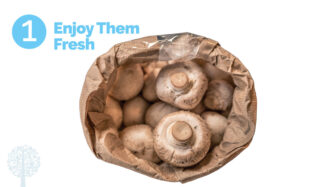
Whether foraged from the wild or cultivated, many varieties of mushrooms will do well for about a week in the fridge. But don’t simply open the crisper and toss them in there; correctly storing mushrooms preserves their texture, flavor, and nutritional and medicinal properties. Wrap mushrooms carefully in paper, not plastic. You can also place a dry cotton cloth at the bottom of the vegetable crisper, put the mushrooms on top, and then cover them with another cotton cloth to prevent molding. Never place wet mushrooms in the fridge; let them air dry on the counter before storing them. Field mushrooms, Black Trumpets, Blewits, Chanterelles, Morels, Hedgehogs, and Shiitakes are a few examples of mushrooms that are good fresh.
Drying Mushrooms
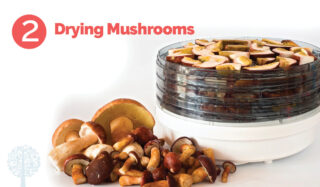
We’re often told that food is better fresh, but that’s not always the case with mushrooms! Drying is an excellent storage method for some varieties, including Black Trumpets, Boletes, Candy Caps, Hen of the Woods, Shiitakes, and Morels. Electric dehydrators are the best way to dry a harvest effectively. You can try to air-dry mushrooms using a fan, hanging them, or sun-drying them on screens outdoors. However, although the mushrooms may look and feel dry, there’s a chance they still contain moisture and will grow moldy over time. When properly dried, mushrooms will keep for several years, ready to be eaten in risottos, stir-fries, soups, and stews. Regardless of the drying method, airflow is more critical than heat; dry mushrooms below 110°F (43°C). Store the dried product in airtight glass containers in a cool, dry place.
Mushroom Powder
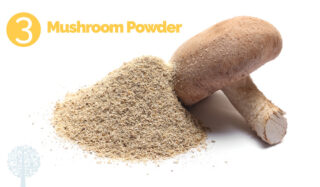
Not all mushroom varieties are well-suited for drying, but that doesn’t mean you can’t use the preservation technique and turn them into something else! While Oyster mushrooms, wine caps, and Chanterelles will dry nicely, the texture changes when rehydrated; nobody likes a mushroom that’s too soft or leathery. If you have an abundance of these mushrooms and can’t enjoy them fresh, you can always dry them and grind them into a powder. Mushroom powders are flavorful and can be used as a substitute for flour or cornstarch in sauces and gravies. Follow the same drying guidelines above, and then use a coffee grinder or pepper mill to pulverize the dried mushrooms into powder for all your culinary creations!
Freezing Mushrooms
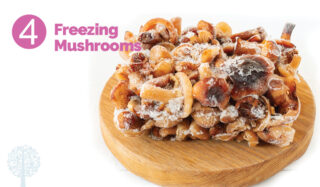
Corn smut and Shiitake mushrooms keep incredibly well in the freezer; other varieties will tolerate this storage method too. Worried about a soggy texture after thawing? The best way to maintain flavor and texture is to partially cook the mushrooms before freezing. Slice them first and blanch them in boiling water for a minute or lightly saute them. Then, throw them into an airtight freezer bag, and you’re done! When freezing large batches of mushrooms at once, it’s best to cook them and then lay them out on parchment paper-covered baking sheets, ensuring they’re not touching before placing them in the freezer overnight. Once frozen, put the mushrooms into a freezer bag. Thaw and warm them up when you’re ready to serve.
Canning And Pickling Mushrooms
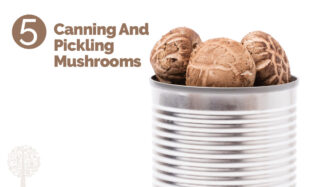
Does the mere idea of a canned mushroom turn your stomach? We don’t blame you! Unlike wild mushrooms, some cultivated varieties are well-suited for canning, like Hen of the Woods and Milk mushrooms. Experts recommend using a pressure canner or cooker. Wild varieties do well with pickling and are a tasty addition to your next charcuterie board. Pressure canners aren’t necessary for this process as the pickling brine’s acid, salt, and sugar will prevent bacteria from growing. In their book, Bunyard and Lynch suggest packing canning jars with sliced or whole mushrooms, depending on their size, and adding a clove of garlic. Mix the brine ingredients in a pot (usually cider vinegar, water, sugar, salt, and pickling spice) and bring to a boil. Pour the hot brine over the mushrooms and boil the jars in a canner for 20 minutes. Let the mushrooms sit for at least a week before opening to develop the best flavor!